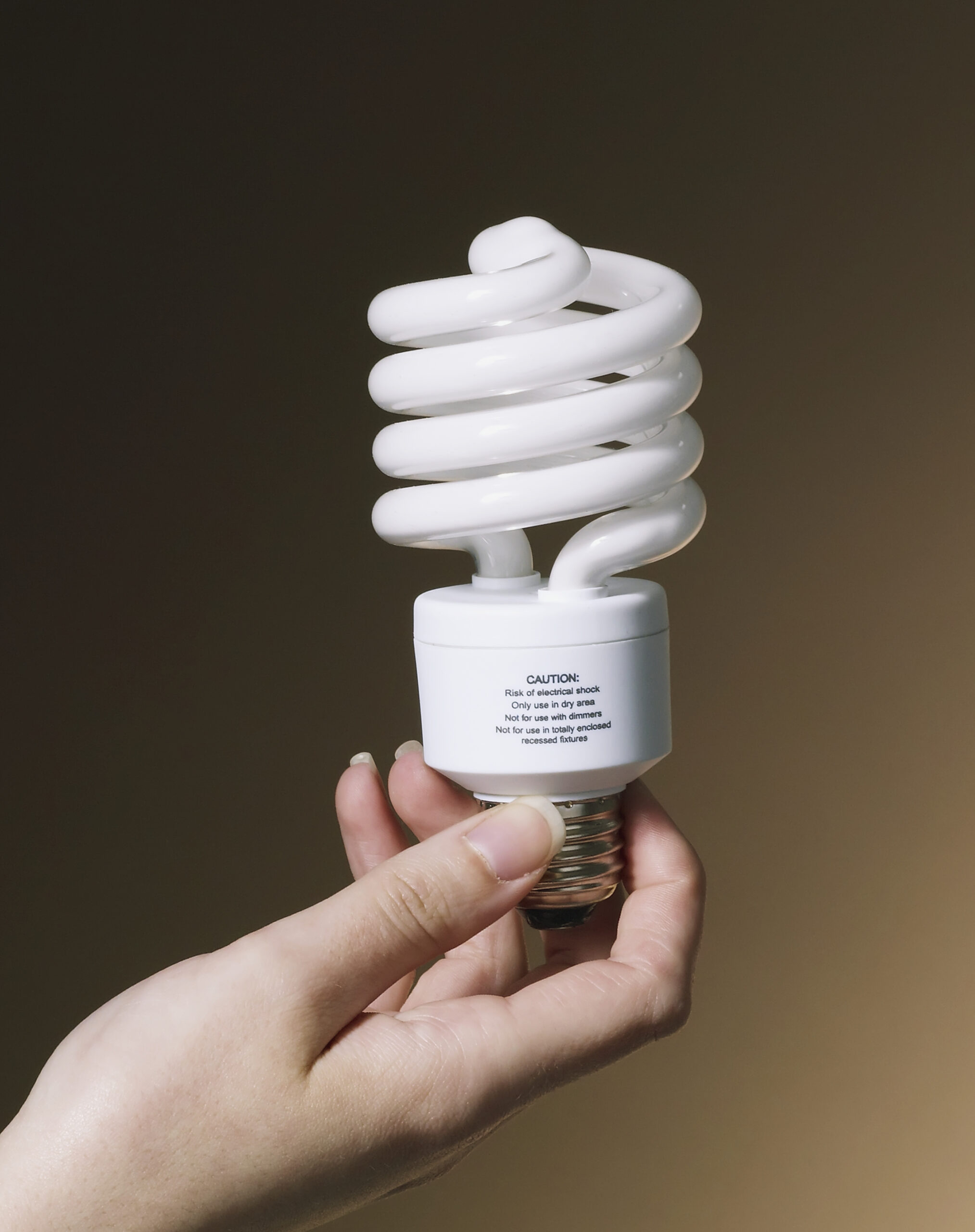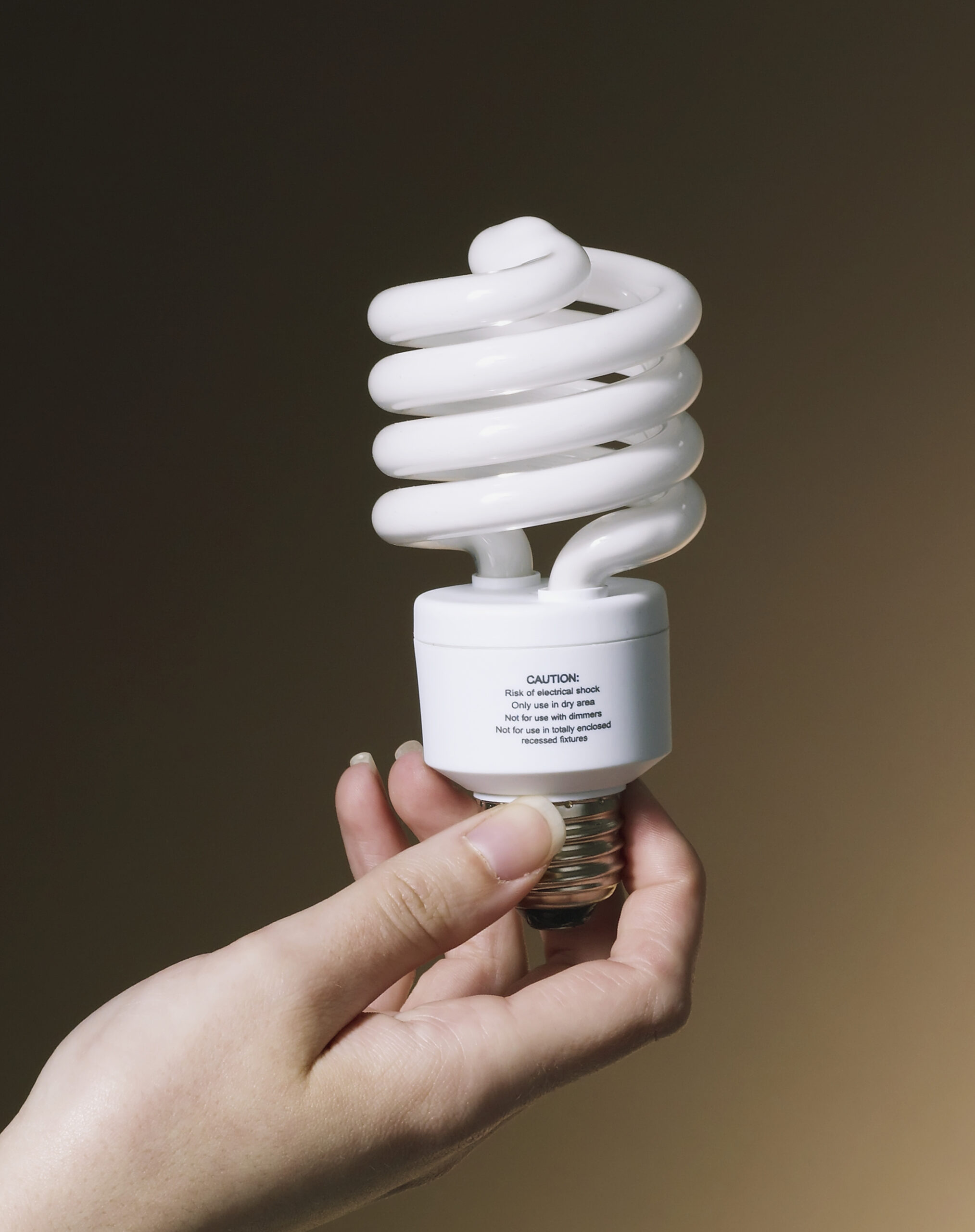Fluorescence (noun, “Flor-ESS-ents”)
Fluorescence is a property of some materials to absorb light at one wavelength and then emit it at another. The emitted light is usually a longer wavelength than the absorbed light. For instance, some fluorescent materials absorb ultraviolet light. This UV light has wavelengths that are too short for us to see. But fluorescent materials bathed in UV light often glow in longer wavelengths that are visible.

Fluorescent materials glow because the electrons in their atoms are excited by incoming light particles, or photons. That is, incoming photons bump the electrons into higher energy states. Then, the electrons relax into lower energy states. That relaxation gives off energy in the form of light. This light is the glow of fluorescence. The glow stops when the material is no longer exposed to incoming light.
We harness the power of fluorescence in some kinds of light bulbs. The inside of these bulbs is coated with a fluorescent material — one that will give off visible light when exposed to UV light. Those bulbs also contain mercury and argon gas. When one is turned on, a stream of electrons runs through it. Those electrons collide with the mercury atoms. Then, those gaseous atoms emit UV light. That UV light causes the fluorescent material on the inside of the bulb to give off visible light.
Many animals are fluorescent, too. They have fluorescent proteins, pigments or other chemicals in their skin, fur or feathers. Such glowing animals include flying squirrels and salamanders, as well as fish, sea turtles and penguins. When a living thing gives off light this way, it is called biofluorescence.
In a sentence
Chalk up one more strange trait for platypuses: they’re fluorescent under UV light.
Check out the full list of Scientists Say.

